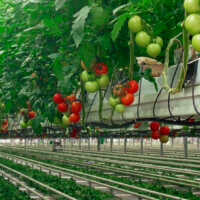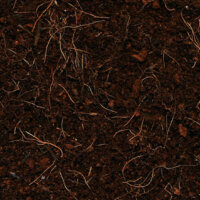Able to be dissolved in water.
A complex carbohydrate that’s manufactured and stored by plants.
Tiny openings in the leaves of plants though which they take up nutrients, release water and take in CO2 (carbon dioxide.)
Simple carbohydrates manufactured by plants via photosynthesis. Sugars can also be added as supplements.
Refers to something that is transported throughout the plant.
The main vertical root of a plant; lateral roots run out from the tap root.
The temperature of a growing environment is crucial to maintain optimal growth and maximize the genetic potential of the plant. The ideal temperature will vary given the stage of growth and the type of plant being grown. During vegetative growth, plants are growing very rapidly and can tolerate higher temperatures than during fruiting and flowering. A typical safe range for vegetative plants is 75-80°F during the light (day) period and 55-60°F during the dark (night) period. For fruiting and flowering growth, the temperature range is 70-75°F during the day and 50-60°F during the night period. Monitoring the growing environment with a thermometer that has minimum and maximum temperature logging is a valuable tool to keep track of the fluctuation of temperature throughout the course of the day.
-

Temperature and Humidity
In order to learn how to create the best environment for your particular crop it is helpful to understand how...
A large class of plant secondary metabolites that play a role in floral aroma and other plant processes, and are increasingly being studied for their medicinal qualities.
-

The pH connection between bacteria and fungi
So, first things first. I’m sure you are wondering, “What kind of person blogs about soil, pH bacteria and fungi?”...
To prune or remove parts of plants to allow remaining plant, flowers or fruits to develop more fully.
To apply fertilizer or compost to the top of soil or grow media.
The evaporation of water through plant stomata.
A frame or netting that supports plants.
Short wavelengths of light past the blue/violet colors on the electromagnetic spectrum whichare not visible.
Water quality is one of the most important factors when growing plants hydroponically. This is because nutrients in solution can become unavailable due to interactions with salt. Water can also contain high levels of sodium and chloride that are toxic to plants. Botanicare recommends using reverse osmosis (R.O.) water when mixing nutrients, and for hydrating growing media like Botanicare’s Cocogro and Readygro. When you want to grow the best hydroponic crops you have to start with the best water. For more information on how you can get the best water for your plants, please visit our partner, Hydrologic.
A compound that reduces the surface tension of a liquid. Used in hydroponics to help a nutrient solution more easily infiltrate the grow media.
-

Why Plants Need Sugars and What They Do With them
Plant carbohydrates, in the form of sugars are the energy source by which all plants carry out their major functions....
The simplest form of hydroponics is the wick system of fertigating your plants using completely passive methods. In this system, plants draw up the nutrient solution via a fibrous material that is placed in a reservoir. The simplicity of this system is its only advantage because there are no moving parts there is little chance of failure as long as there is water available. The disadvantages of this system are that it does not allow the grower to control rate and frequency of irrigation and during warmer periods the wick system may not be able to keep up with the irrigation needs of the plant. This is the least popular type of hydroponic system and is rarely used at the commercial level.


